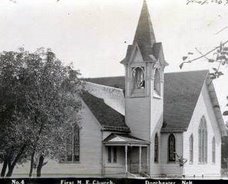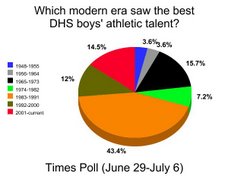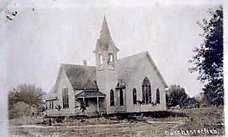 We love Dorchester Public School. We love the building; the teachers; the administration; and the students.
We love Dorchester Public School. We love the building; the teachers; the administration; and the students.To be clear, we think DPS ranks among the best Class D schools in the state.
But an investigation by the Times has found that the cost of educating our students significantly exceeds the state average.
That leads us to ask: Can our school and our school board do more to keep the costs of educating our kids in check?
According to our investigation, Dorchester Public School's per-student cost for school year 2013-14 was $16,911, when broken down by average daily membership.
When using average daily attendance, it cost our school district taxpayers $17,506 per pupil.
Those are shocking figures -- especially considering that 20 years ago the cost per pupil was around $6,400 a year.
Why should you care? Consider that funding for K-12 education makes up 60% of the average property tax bill in Nebraska.
Then consider that during the 2013-14 school year, the average cost per pupil across the state was about $11,364. That means it costs DPS $5,547 more per year, per student.
Now keep in mind that Dorchester does not boast the most expensive per-pupil cost in the county. That distinction belongs to Friend Public School, which has a per-student cost of $18,007 when tabulated by average daily membership. Friend's per-student cost is $18,812 when figured by average daily attendance.
Crete Public Schools spent $11,088 per pupil. Wilber-Clatonia Public Schools spent $10,746 per pupil.
Statewide, the lowest cost per pupil belongs to Gretna Public Schools, which spent $9,380 per student. The highest cost per pupil belongs to Wheeler Central Public School, which spent a whopping $28,276 for every K-12 student.
The comparisons are at: http://www.education.ne.gov/FOS/SchoolFinance/AFR/PPCArchive.html


















































The higher cost of educating Dorchester's students is primarily due to the low numbers of students in the district. Small districts have the same requirements as larger schools - but will naturally have a higher per pupil cost. Small schools frequently have one $75,000 teacher (total salary and benefits) for a classroom of 10 students. A larger school will have that same $75,000 teacher in a class room of 25 students. This is a simple illustration why per pupil costs are higher in a small school -- small school's $7,500 per pupil cost vs. $3,000 per cost in the larger school.
ReplyDeleteIt's simple math - Total Costs divided by a smaller student count number results in a higher per pupil cost. It's the cost of a small school. There are benefits to choose to have your child in a small school setting - but you're going to have pay for it.
In the future, please include all of the facts when a story like this appears -- Obviously this article was not intended to educate your readers.
Even I could make the connection between the higher costs per student for smaller schools. Do you really think the blogsters needed spell that out? If they had, I'll bet you'd be accusing them of pushing for consolidation. :-/
ReplyDelete